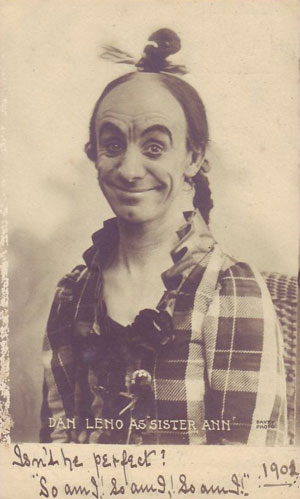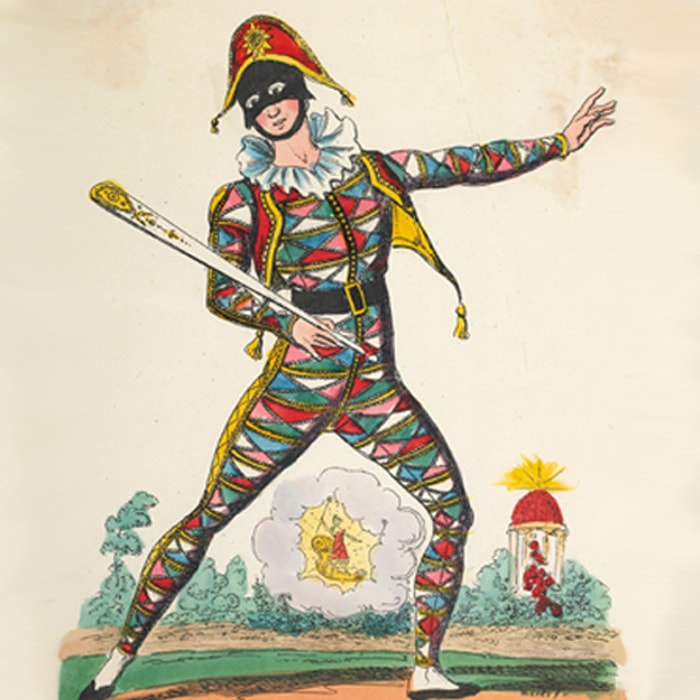It may be ‘behind you!’ but the history of Pantomime is a fascinating read. Known for its emphasis on audience participation, the eccentric British musical theatre tradition of panto dates back to as early as the 16th century. Pantomime often provides young children with their first glimpse of live theatre, so its easy to see why it holds a nostalgic place in many of our hearts. Taking place at Christmas time in venues from Village Halls to iconic theatres with vast capacities, the Pantomime is for everyone. Join us as we take a look at the history of Pantomime.
It’s Italian. (Oh no it isn’t!)
Even though we think of the Pantomime as a distinctly British Christmas love, it actually has its roots in Italian street theatre of the 16th Century. Commedia dell’arte was comedic with stock characters much like those we know today. Key characters were Columbine, a girl in love with naughty servant Arlecchino, Pierrot the clown and old man Pantalone. The masks the cast wore allowed them to make risqué topical jokes without fear of being recognised. Many plots from the Commedia centred around the triumph of the underdog, which would go on to be a popular feature in Pantomimes.
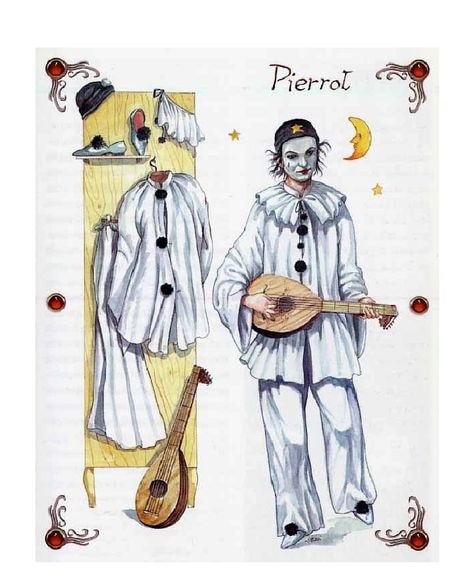
The Lord of Misrule
During the Roman empire masters would allow their servants to temporarily act as boss or ‘king for a day’. This is thought to have inspired the Tudor era tradition of the Feast of Fools in which a commoner would be selected as Lord of Misrule to preside over a decadent and raucous banquet during which gender role reversal was encouraged. This may have been the source of the Pantomime Dame and Principal Boy.
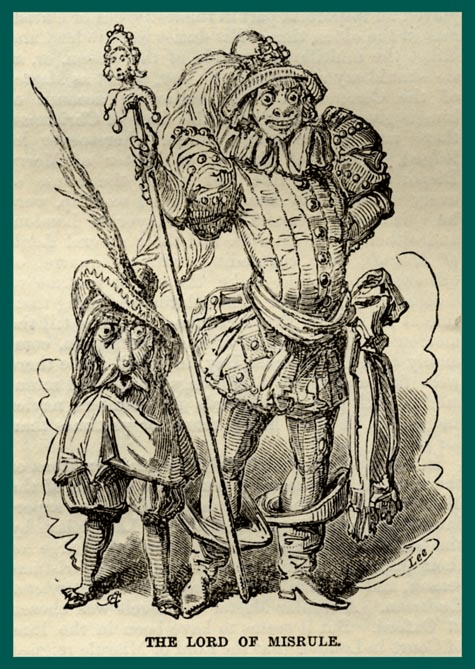
A Nod to the Elizabethans
The word ‘Pantomime’ means all kinds of mime. It is thought to be inspired by the Masques popular in the Elizabethan and Stuart times, which were a form of festive courtly entertainment involving elaborate staging, singing, acting and dancing. In the 14th century Masques were mostly performed in very grand houses but by the 17th century they were a convenient excuse for a themed party.
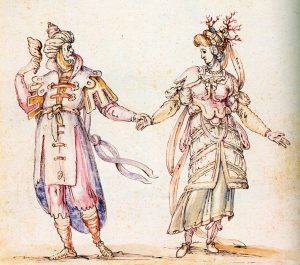
Theatre Controversy
British theatre impresario, mime and dancer John Rich reinterpreted these Italian characters for a UK audience in the 1720’s. Arlecchino became Harlequin, an acrobatic imp like magician. Rich’s plays were an early form of the Pantomime known at the time as ‘Harlequinades’. The Harlequin had a literal ‘slap stick’, which he would manipulate the scenery with. Renowned actor-manager David Garrick was one of the many voices complaining that Pantomime was a threat to ‘legitimate’ theatre. Rather than do nothing he said “If they won’t come to Lear and Hamlet I must give them Harlequin.” He set about limiting Drury Lane pantomimes to the Christmas period and they eventually became associated almost entirely with the fun and frivolity of the holiday season.
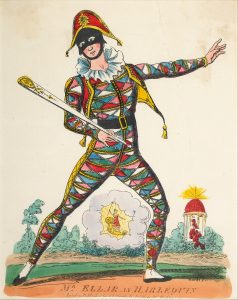
The Principal Boy
Actor Joseph Grimaldi fine tuned the character of the Harlequin in the 1700’s. Sets and costumes became more and more elaborate. In the Victorian era the character of the Principal Boy was introduced, always played by a woman. This gave the audience a rare glimpse of a woman’s legs on stage, or what was often termed a ‘well turned ankle’. The principal boy is no longer always played by a woman. In the 1950’s celebrities like Cliff Richard began being cast in this traditionally female role.
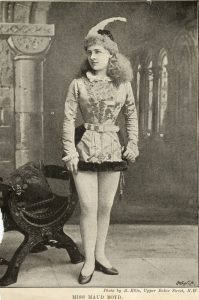
Satire
Satire is of course a great British tradition so it isn’t surprising that it found its way into pantomime. Joseph Grimaldi was a famous Clown in the 18th Century whose Biography was compiled by Charles Dickens. Performing during the Regency period at a time of war with the French, Grimaldi offered humorous and ridiculous commentary on technology, politics, new forms of transport and fashion. A tragic character, Grimaldi fell into destitution and died young. Fans lined the streets of London to pay their respects.
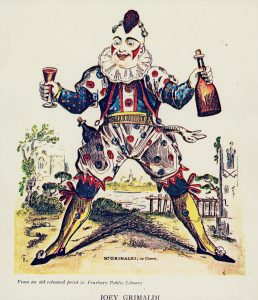
The Influence of Music Hall
The comedic rhymes we associate with the modern day Pantomime came to the fore in the Victorian era. Fairy tales began being woven into the narratives and the tradition of the Harlequinade faded in popularity. The influence of Music Hall (very similar to Vaudeville in the US) began to be felt. Stars crossed over from Music Hall bringing more than a touch of the bawdy humour they were known for. Augustus Harris – popularly known as the father of modern pantomime – encouraged intense competition between theatres and lavish productions. The last Harlequinade was performed in 1939.
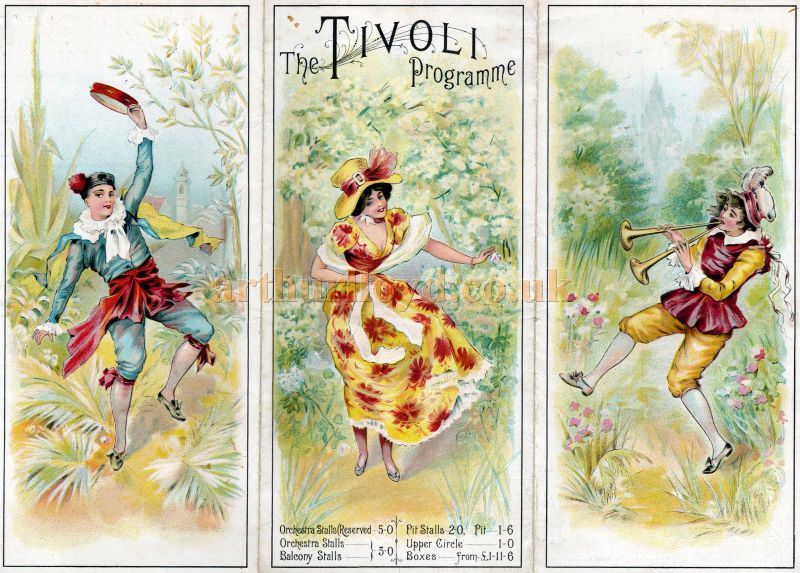
Birth of the Modern Pantomime Dame
The Pantomime Dame played by a man was not a new concept, but in the 1880’s celebrated Music Hall performer Dan Leno began honing the role. Previously she had been ridiculous and unbelievable, but Dan infused her with a background the audience could relate to; poverty, abandonment and unemployment. She was an older woman facing adversity with strength of character and fun.
The tradition of healthy competition very much continues in Pantomime, with theatres vying for the celebrity stars who will fill seats. In the past productions would only last for a few weeks whereas today they experience long runs of up to eight weeks. There are big production teams which run multiple productions at a time across the UK.
